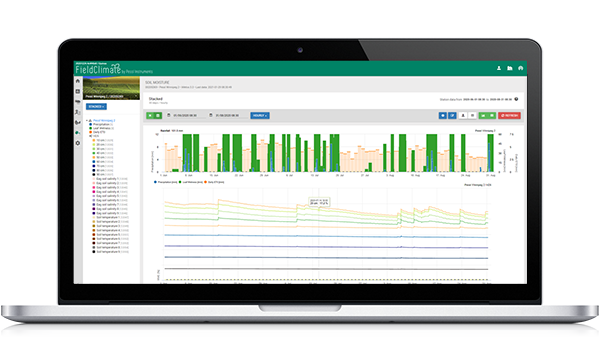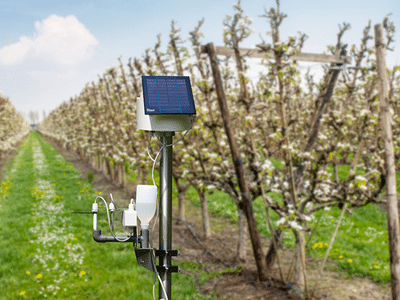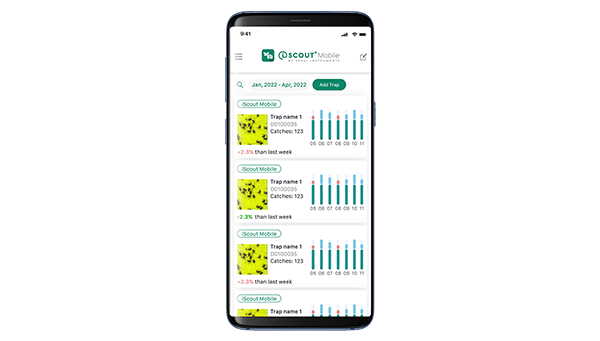

Coffee disease models
Coffee leaf rust
Coffee Leaf Rust caused by Hemelia vastatrix is the most well known coffee disease. It was first detected in 1861 in the lake Victoria Area of Kenya. In 1869 it was found in Sri Lanka (former Ceylon), where it spread over the whole coffee growing areas worldwide, except the growing areas of Hawaii.
Symptoms
Yellow to orange powdery spots appear on the underside of leaves, with corresponding chlorotic patches on the upper side. Initially, these are only 2-3 mm in diameter, but steadily expand and can eventually reach a diameter of several centimeters. Young lesions may appear as small chlorotic spots before sporulation occurs. The centers of older lesions become necrotic and the sporulating zone is restricted to the outermost zone.
A major effect of the rust is to cause defoliation. Symptoms are visible 2 t0 3 weeks after infection. Sporulation occurs after 2 to 8 weeks.
Coffee Leaf Rust Infection
Uredospores need free water to germinate and to form an appressoria. Germination takes place within 2 to 10 hours depending on climate conditions. Appressoria formation takes less than 6 hours under optimum condition. At least after 22 to 24 hours the infection process is finished.
Requirements for Infection
- Leaf Wetness
- Darkness
- Air Temperature in between 15°C and 28°C
- Optimum Air Temperature is 22°C to 25°C
The Coffee Leaf Rust Infection Model
Shows the progress of weak, moderate and severe Infections. The graph below shows an infection for the 7th and 8th of March for Sabukia Kenya. A weak infection could be completed and a moderate infection could be nearly completed, where the leaf wetness was not lasting long enough to complete a severe Infection.
Coffee Leaf Rust Infection Severity
The severity of an infection is depending on the:
- Quantity of Spores
- Distribution of Spores
- Portion of Spores germinating and infecting during the given leaf wetness period.
The quantity of spores can not be accessed on base of weather data. For the spore distribution we have the factor wind and rain. In a dry atmosphere spores will be distributed by wind. During a rain storm splashing rain will distribute the newly formed spores which might be the most virulent ones.
Coffee Leaf Rust Infection Severity Model
The severity of an infection is calculated by the:
- Sum of rain during during infection
- If it was a weak, moderate or severe Infection
The FieldClimate Coffee Leaf Rust Severity Model uses the following decision system:
- if CLRsevere=100% and rainsum >= 5 then CLRseverity := 5 else
- if CLRmoderate=100% and rainsum >= 10 then CLRseverity := 5 else
- if CLRsevere=100% and rainsum > 2 then CLRseverity := 4 else
- if CLRmoderate=100% and rainsum >= 5 then CLRseverity := 4 else
- if CLRsevere=100% then CLRseverity := 3 else
- if CLRmoderate=100% and rainsum >= 2 then CLRseverity := 3 else
- if CLRweek=100% and rainsum >= 10 then CLRseverity := 3 else
- if CLRmoderate=100% then CLRseverity := 2 else
- if CLRweek=100% and rainsum >= 2 then CLRseverity := 2 else
- if CLRweek=100% then CLRseverity := 1 else CLRseverity:=0
Coffee Leaf Rust Infection Severity Model
The severity for the coffee leaf rust infection at the 7th and 8th of March at Sabukia, Kenya was rated to be 2. There was only a weak infection and it was raining more than 2 mm.
Looking for the daily values might give a better overview about the situation. This graph shows the sevirity value of Coffee Leaf Rust and Coffee berry disease together with the Propagation potential of Bacterial Blight. This data are again form Sabukia, Kenya. We can see some Coffee Leaf rust Infections in the second week of February and beginning with the forth week of February a higher incidence of Coffee Leaf Rust Infections with higher severity ratings.
Coffee berry disease
Coffee Berry Disease caused by Colletotrichum coffeanum was detected in Kenya 1922. The fungus lives in the bark of the coffee tree and produces spores which attack the coffee cherries. Spraying has been determined to be the best way to avoid the coffee berry disease.
Coffee Berry Disease Infection Severity Model
Although this pathogen is capable of infecting leaves, stem bark, and twigs of the coffee plant, only the strain or species of Colletotrichum that can infect immature or green berries is the causal organism of CBD. Direct losses occur as a result of flower and young fruit infection. CBD on green berries has two forms. Active lesions are initially evident as small dark sunken spots that spread rapidly to involve as much as all of the berry. If infection occurs early and climatic conditions favor disease development, berry development is arrested, resulting in mummified berries on the fruiting branch.
Coffee Berry Disease Infection
Flowers are susceptible at all developmental stages from the pale green unopened spike. Immature fruit or berries are most susceptible during their expansion phase which occurs from 4-14 weeks after flowering. Earlier berry stages or pin head berries and the mature green beans are fairly resistant, becoming susceptible again as the berry begins to ripen. The pathogen sporulates readily and is evidenced by a pale pink crust on the lesion surface. When the berry ripens and anthracnose fully develops, the bean can become infected and seed borne.
Spores germinate to produce germ tubes and appressoria in free water from which infection pegs emerge to penetrate the surface cuticle. Optimum Temperature is form 22°C to 27°C it can take place from 10°C to 30°C. Infection leads to typical black sunken anthracnose lesions of CBD initially appear about 1 week after inoculation and most by 2 weeks for berries.
During the afternoon of the second of March we can see that a sporulation of CBD took place in Sabukia, Kenya. This sporulation completed at 22:00 and the model started to calculate the progress of an infection. This infection was completed at 5:00 at the third of March. Whereas at the first of March air temperature has been too low to complete an infection.
Coffee Berry Disease Infection Severity
The Infection severity is evaluated on basis of the rain intensity during the leaf wetness period leading to infection. More than 10 mm of rain => Severity := 5
- More than 5 mm of rain => Severity := 4
- More than 2 mm of rain => Severity := 3
- No rain => Severity := 2
- No Infection => Severity := 0
The infection was completed at 5:00 at the third of March. The severity was rated to be 3. There has been more than 2 mm of rain during the leaf wetness period.
When we look for the daily values we can get an overview over the complete February and the first day of March. Where we can see an increase in disease severity in the last week of February and in the first days of March.
Bacterial blight of coffee
Bacterial Blight of Coffee caused by Pseudomonas siringie cv. garciae makes a leaf and twig blight on coffee plants in East Africa and South America.
Symptoms
Lesions on the leaf begin as water-soaked spots that turn black and expand. So the leaves become necrotic and curl inwards, but remain attached to the plant. When the terminal bud on the shoot becomes infected, the infection moves down causing dieback. Axial buds on young branches in some distance form the tip are vulnerable to infection too. The lesion can griddle the branch, damaging the vascular tissue and causing the branch above the blackened node to wilt and die. The most typical symptom of heave infestations are blackened tips of branches looking like burned.
Weather situations favoring the Infection
Bacterial blight is most endemic in the higher growing areas like around Mount Elgor, Solai and parts of the Nyeri district in Kenya. Here infections are mostly found after cool nights and most frequent after hail storms where the wounds made by the hail are the entry ports for the bacteria to infect the plants and the leaf wetness left after the hail is giving the moisture for the infection. Optimum temperatures for this disease tend to be around 12 to 25°C. If there is an event allowing the bacteria to infect the coffee tree, the infection severity will be as higher as more inoculum is available.
Bacterial Blight of Coffee in the FieldClimate bacterial propagation model
For Kisi, Kenya bacterial propagation was quite low during February and increased at the end of February beginning of March with the onset of rains.
Pesticide wash off in coffee trees
Intense rain will wash off the pesticides residuing on the leaves of coffee trees or other plants. There has been a big improvement of the rain hardness of modern fungicides since 1980. Actually we can expect the most modern fungicide to resist up to 30 mm of rain if they had a chance to dry on the leaf. If the rain was starting immediately after the spray or trough the spring the rain resistance might be widely reduced.
Old fashioned formulations of contact fungicides we have to expect a rain hardness of less than 12 mm. Like we were used to it during the 1970th. To wet the leaves in a vineyard it needs approximately 2 mm of rain. Therefore in this module we only accumulate rains with are bigger than 2mm within one leaf wetness period. This means there might be in total 6 mm of rain during a single day, but this module is not accumulating any of it because the leaves has got dry again before it was raining 2 mm.
Rain is accumulated for 3, 5 and 7 days. Over a longer period plant growth is much more important for the effect of contact fungicides than rain reistance of the compounds.
Recommended equipment
Check which sensor set is needed for monitoring this crop’s potential diseases.




